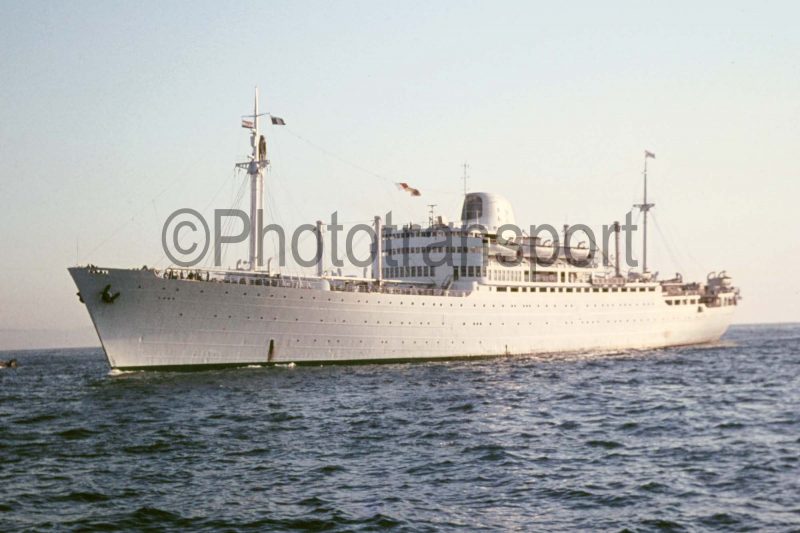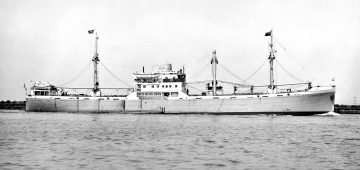Messageries Maritimes and Chargeurs Reunis

French Indo China, part of which was the captivating country of Vietnam of today with an area of 128,402 square miles, was first discovered by the Portuguese in 1545, followed by the Dutch and then the French. The local Nguyen Anh dynasty took the Catholic religion from French missionaries, but felt no gratitude to the grasping French authorities and instigated anti-French measures. The Vietnamese have fought for centuries to assert their national identity, and a savage cycle of rebellion and repression was established. French troops occupied Danang in 1858/59, seized Saigon in 1860, and in 1865 forced the Nguyen Anh heirarchy and leaders to form Cochinchina, the southern half of Viet Nam, as a French colony. By 1883, France occupied the whole length of the country, with a coastline of over one thousand miles covering fourteen degrees of latitude, from Annam in the north to Tonkin in the centre and Saigon in the south, with the imperialist faction in France having sent yet more troops to the Bay of Haiphong in 1884. The Nguyen Anh dynasty leaders were reduced to French puppets, with France then occupying Cambodia and Laos, and in 1887 they created the colony of Indo China to include Laos and Cambodia with a capital at Hanoi in the north.
Paul Doumer, the French Governor of Indo China from 1897 to 1902, imposed heavy taxation on the population, state monopolies on salt, alcohol and opium, with enforced labour to work the coffee and rubber plantations and the extensive mineral mines. Forty years later, the rise of Nazi Germany and the occupation of France led to the puppet Vichy French regime controlling Indo China and collaborating with Japan, the Axis partner of Germany, in a brutal and savage campaign of terror against the local population. Ho Chi Minh (1892-1969), the architect of Vietnamese independence, was educated in France and began resistance by organising a nationalist movement against the French and the Japanese. In March 1945, faced with imminent defeat, Japan took over direct administration from the Vichy French regime. However, Ho Chi Minh and his Viet Minh forces had already liberated parts of the far north and after the surrender of the Japanese on 15th August 1945 he declared national independence on 2nd September 1945 in Ba Dinh Square in Hanoi.

General Charles de Gaulle was determined in 1946 to regain control of Indo China and he sent battalions of troops on Messageries Maritimes liners. The First Indo China War saw much fighting by Viet Minh forces from their strongpoints in the Viet Bac region, eventually taking over much of the countryside, with the French only holding Hanoi, Saigon, Danang and most large towns. Dien Bien Phu is situated in a fertile valley in the centre of the country and was the scene of the decisive battle in May 1954. The French infiltrated the area but Viet Minh troops systematically broke down the French position. General de Castries, the French commander, and his troops were surrounded, captured and imprisoned. The terms for a ceasefire were agreed in Geneva, with two military zones established, the French to the south of latitude 17 degrees North, and the Viet Minh to the north of that line.
The United States of America were funding as much as 80% of the French war effort in an attempt to stem the flood of Communism from the north, and they were committed to saving the South Vietnamese regime in 1961 and started bombing the north. North Viet Nam actively assisted the insurgent movement in South Viet Nam from 1959. The Americans then began their own protracted Viet Nam War during 1968/75. They suffered defeat by the clever use of warfare using deep concealed trenches for the Viet Cong guerrillas to advance from their strongpoints, and the last American troops sailed from the Saigon river on 29th April 1975. There is a river connection from Saigon, renamed Ho Chi Minh City in 1975, to the mighty Mekong river to the west. At Saigon, the famous Chinese style ‘House of Dragons’ company agency building was built behind the three Messageries Maritimes river berths, with a constant procession of small craft passing up and down the Saigon river.
Messageries Maritimes Services
The French Indo China service by Messageries Maritimes began on 19th October 1862, as part of a mail contract signed a year earlier to service the French overseas possessions in the Far East, with later extensions to Hong Kong, Shanghai and Yokohama. The steamer Neva of 1,085 grt took the Marseille to Alexandria leg, while Imperaterice of 2,188 grt with accommodation for 87 passengers in three classes and up to one thousand troops in dormitories in the holds, took the Suez onward connection. The construction of the Suez Canal had already begun, and this system with land connection in Egypt was seen as a short term measure. A repair yard was established at Suez to service the Eastern steamers, and was used by two near sisters of Imperaterice that followed on the route in Cambodge of 2,205 grt and Donnai of 2,535 grt.

Subscribe today to read the full article!
Simply click below to subscribe and not only read the full article instantly, but gain unparalleled access to the specialist magazine for shipping enthusiasts.





Comments
Sorry, comments are closed for this item